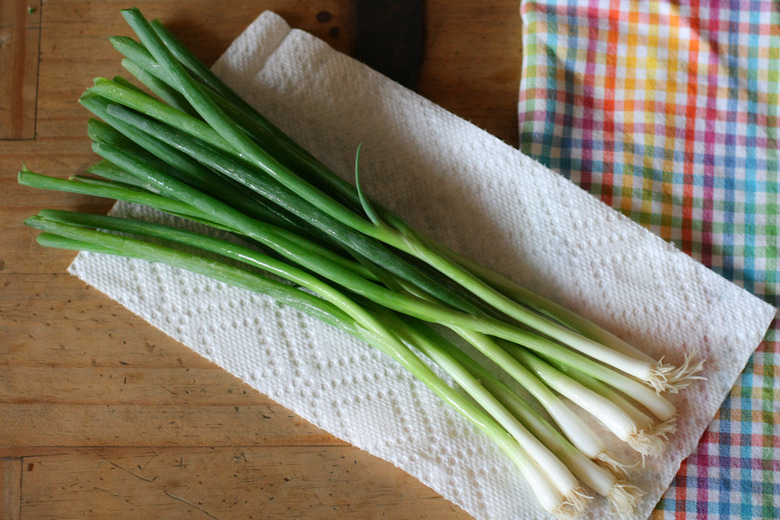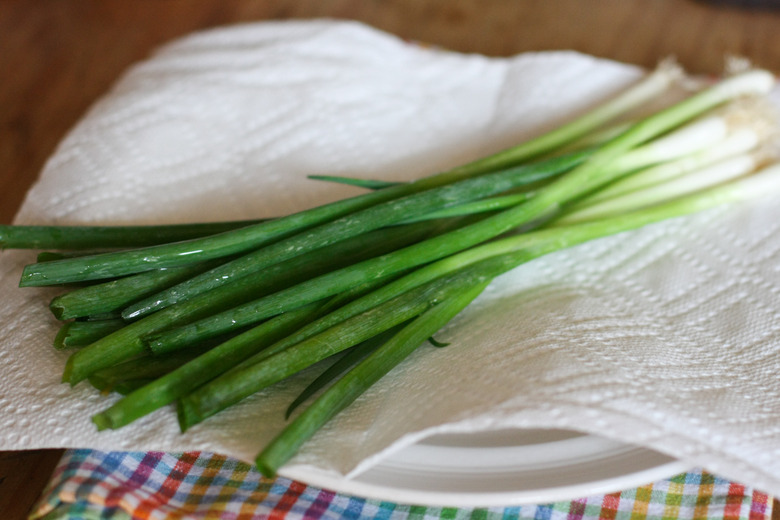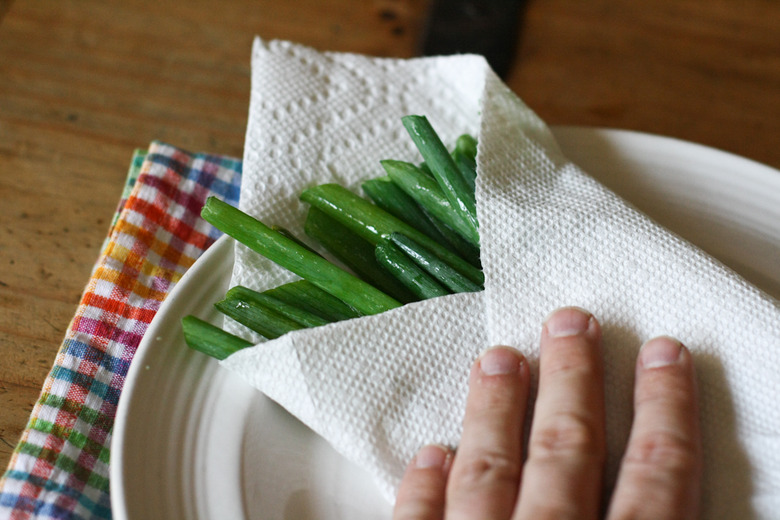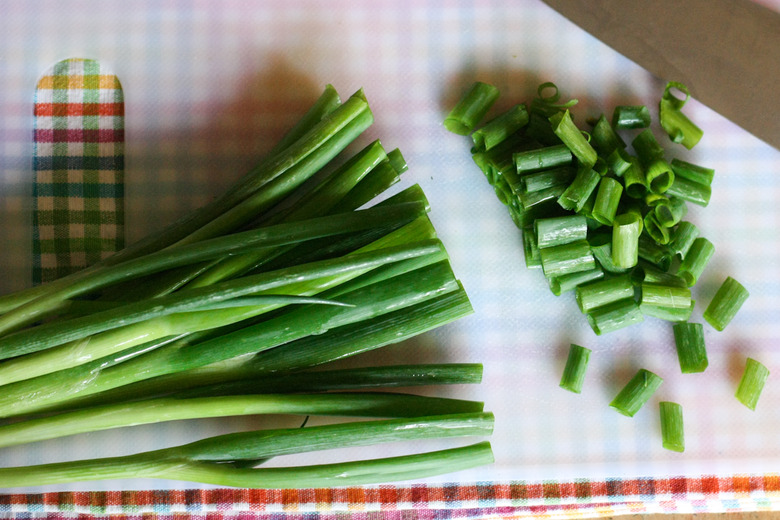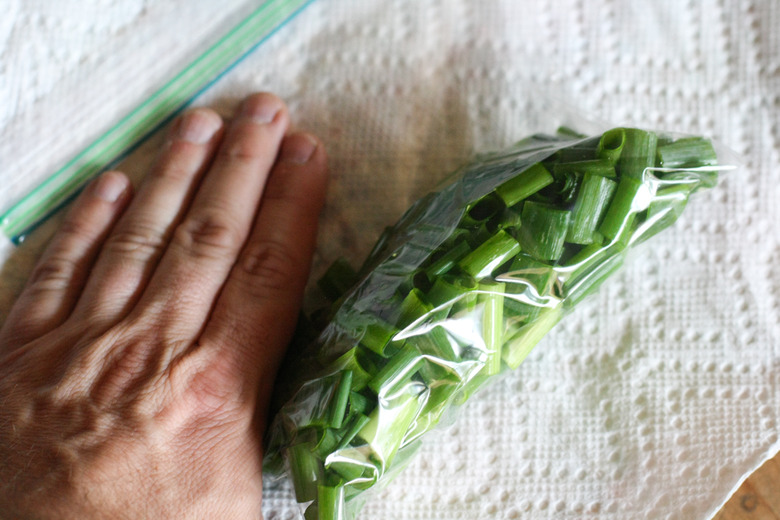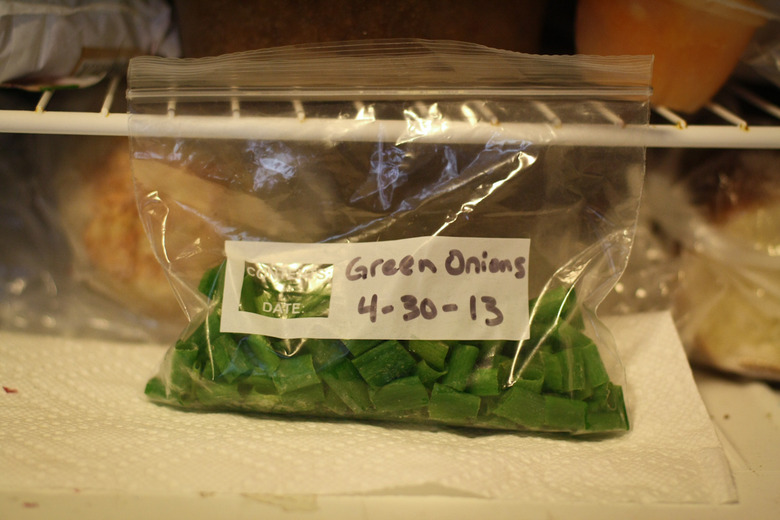How To Freeze Green Onions
Unlike many other vegetables, green onions do not require blanching, a process of boiling rapidly for a few minutes and plunging into ice water, before freezing. Green onions need very little preparation prior to freezing, but the University of Florida IFAS Extension warns that frozen green onions will not remain crisp. The texture of green onions becomes slightly tough after thawing, but they will retain their flavor. For the best results, use thawed green onions in casseroles and soups, but not where you desire a fresh texture.
Step 1
Rinse the green onions under cold, running water to remove any dirt. After rinsing, transfer the onions to a plate lined with paper towels.
Step 2
Pat the green onions dry, removing as much excess moisture as possible. Freezing green onions while they're wet may cause freezer burn.
- Unlike many other vegetables, green onions do not require blanching, a process of boiling rapidly for a few minutes and plunging into ice water, before freezing.
- For the best results, use thawed green onions in casseroles and soups, but not where you desire a fresh texture.
Step 3
Chop the green portion of the onions, and the bulb if desired, into small 1/2-inch pieces with a sharp knife. Discard any damaged or yellowed pieces.
Step 4
Put about two cups of the chopped green onion pieces into pint-size zipper-closure freezer bags, and label with the date and contents. Squeeze out as much air as possible, and seal the bags.
Step 5
Place the sealed and labeled freezer bags into your freezer immediately. Use frozen green onions within six months.
Soil For Green Onions
Green onions grow best when temperatures are between 68 and 77 degrees Fahrenheit, so soil that drains quickly and doesn't remain overly wet during cool weather is best. Sites with heavy clay soil retain moisture too well, especially during cool weather. Working 2 to 3 inches of compost into the site before planting can improve drainage and moisture retention. Otherwise, green onions tolerate a range of soil types and can grow well in most established vegetable gardens as long as they receive at least six hours of daily sunlight to help fuel leaf growth. Soil pH determines the acidity of the soil. Overly acidic soil can negatively affect green onion growth. The testing kit provides a guide for how much lime to work into the top 6- to 8-inches of the soil. Like most onions, green onions only grow shallow roots, so most soil fertility must be in the top 3 to 6 inches of soil for the plants to access it. Overcrowded plants must compete for nutrients, water and sun, so they may not grow as well.
- Chop the green portion of the onions, and the bulb if desired, into small 1/2-inch pieces with a sharp knife.
- Like most onions, green onions only grow shallow roots, so most soil fertility must be in the top 3 to 6 inches of soil for the plants to access it.
Things Needed
- Paper towels
- Pint-size zipper-closure freezer bags
Warning
Do not freeze green onions whole, as this makes the toughness of the thawed onions more noticeable. Always chop them before freezing.
Tip
Freeze only those green onions with crisp, fresh green tops. Add the green onions still frozen to soups, stews, and casseroles, or thaw them long enough to separate the pieces before using. Do not thaw and refreeze the entire bag, as this only toughens the onions further.
References
- "Recipes from America's Small Farms"; Joanne Lamb Hayes, Lori Stein, Maura Webber; 2003
- "Good Housekeeping Soups & Stews"; Editors of Good Housekeeping; 2007
- University of California Vegetable Research & Information Center: Green Onion Production in California
- Ohio State University Extension: Growing Onions in the Home Garden
